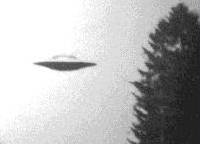Article/Document:
UFOCAT Database Info (CUFOS / UFOCAT.com) - Latest version (2003)
Donald Johnson, UFOCAT.com / CUFOS
original source | fair use notice
Summary: UFOCAT refers to a computer database of over 170,000 UFO reports and related information. It is the result of a 36-year effort that began during the U.S. Air Force sponsored Colorado UFO Project, also known as the "Condon Committee."
Welcome to the UFOCAT.com website. UFOCAT refers to a computer database of over 170,000 UFO reports and related information. It is the result of a 36-year effort that began during the U.S. Air Force sponsored Colorado UFO Project, also known as the "Condon Committee." UFOCAT was begun by Dr. David R. Saunders, who at the time was a co-Principal Investigator on the Colorado UFO study and professor of Psychology at the University of Colorado. Dr. Jacques Vallee contributed a large computer catalogue of approximately 6,000 cases at the project's inception.
The UFOCAT database has existed in some form or another since the spring of 1967 but underwent an eight-year hiatus from 1982 to 1990 when it was neither updated nor utilized. In 1976 Dr. Saunders gave his version of UFOCAT to the Center for UFO Studies (CUFOS). From then until 1982 it was maintained and updated by Fred Merritt at the Chicago office of CUFOS. In those days the database was kept on a large IBM mainframe computer at a nearby facility. It eventually proved to be too expensive an endeavor for the Center to maintain on a mainframe, and consequently was removed from active use and stored on tape.
In 1990, Dr. Donald Johnson obtained a copy of UFOCAT on ten 3.5" diskettes from Dr. Saunders courtesy of Dr. John Derr of the U.S. Geological Survey. Dr. Derr had created the diskette version from one of the magnetic tape backups for his research use. Unfortunately he was unable to read the first portion of the tape and so we were missing the first 10,000 records. Mark Rodeghier, Director of CUFOS, provided an older tape backup copy of UFOCAT. By merging the two sources of data we recreated the catalogue as it existed in 1982. Since then over 70,000 additional records have been added. UFOCAT99 was first released in the Autumn of 1999 with over 111,000 records, and the current UFOCAT 2003 version has over 172,000 records.
With the great strides made in computer software and hardware technology, and with the substantial reduction in costs of memory and storage, it made sense to greatly revise and expand the UFOCAT file structure. First using dBase IV and later Microsoft Access 97 the file was converted to a modern relational database. Nearly all of the original single-letter codes from the 1970's version were replaced with longer, more understandable names. Several fields were added. A special emphasis was placed on improving the identification of the sources for each UFO report, including the full name of the author and a much longer mnemonic code for the reference citation. Several other database tables now exist including one that contains population figures and reporting rates for counties and political subdivisions for most of the world, a bibliography of over 1,000 sources, and a database of photographic images and sketches by UFO witnesses. UFOCAT exists today as the most comprehensive reference tool and bibliographic source on UFO reports in existence.
Bio
DONALD A. JOHNSON, Ph.D.
Donald Johnson is an industrial/ organizational psychologist and test developer. Dr. Johnson has had a long term interest in the UFO phenomenon dating back to Michigan "swamp gas" UFO wave of 1966, and maintains a computer database of over 170,000 UFO reports for the J. Allen Hynek Center for UFO Studies, called UFOCAT. He is the author of The UFO Phenomenon: A Guide for the Perplexed (in press). He is also an avid student of cultural and biological anthropology, behavioral genetics, and the evolutionary history of human beings.
Read more articles on this topic:







